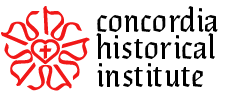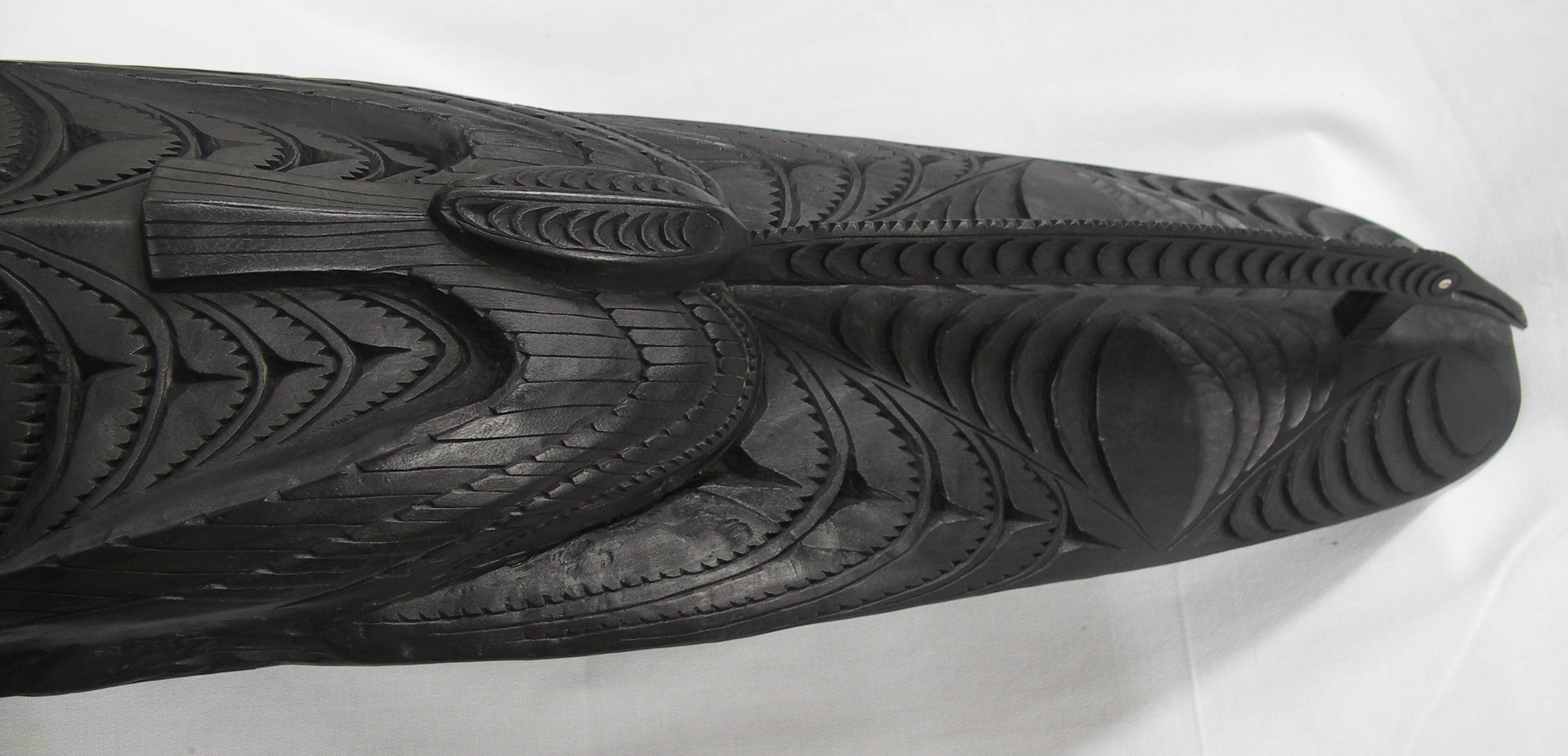November 23, 2012
Artifact: Wooden Mask from Papua New Guinea
 Size: 11 (at widest) x 41 x 4 inches (w x h x d)
Size: 11 (at widest) x 41 x 4 inches (w x h x d)
Date: unknown (perhaps ca. 1965-1971)
Significance: The LCMS has had missionaries in Papua New Guinea for nearly sixty-five years. CHI has many Papua New Guinea artifacts, including apparel (belts, headdresses and jewelry), tools (axes, knives and spears), everyday objects (combs, net bags and spoons) and wooden carvings like this mask.
About the mask: The mask is relatively new to the CHI collection. It was donated in 2011 by Robert and Lois Kroenke, who served as mission builders in Papua New Guinea from 1965 to 1971. The mask itself is carved of wood, but the eyes of the face and bird are sea shells. The mask is from the Sepik River area. This was a newly made mask when the donor purchased it, but this type of item would have been used in the native people’s spirit houses.
2011 by Robert and Lois Kroenke, who served as mission builders in Papua New Guinea from 1965 to 1971. The mask itself is carved of wood, but the eyes of the face and bird are sea shells. The mask is from the Sepik River area. This was a newly made mask when the donor purchased it, but this type of item would have been used in the native people’s spirit houses.
About mission work in Papua New Guinea: The LCMS began mission work in Papua New Guinea in 1948. There were several Lutheran missions along the coast at that time, but the LCMS missionaries began working with the Enga people in the Western Highland District. By the time Robert Kroenke arrived with his wife, Lois, in 1965, the mission was well-established with numerous mission stations and had grown to include work with the Ipili and Duna tribes as well. The Kroenkes’ first six months were spend learning the Enga language in the language school at Irelya. Then they were assigned to build homes, schools and other buildings at a variety of mission stations, including Pausa, Papayuku, Lae and numerous “out stations.ˮ The Kroenkes wrote a book about their experiences, Letters from New Guinea, which sheds light on what mission work was like at the time, including insights into the people and culture.
To see more artifacts and photographs from our Papua New Guinea mission work, please visit the Concordia Historical Institute Museum at the LCMS International Center in Kirkwood, Missouri.



